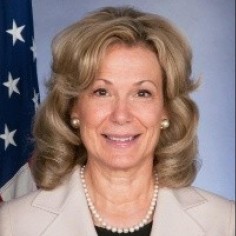Since 2008, the gap between rural and urban American mortality has been increasing. We now are at the point that death rates from all causes and adjusted for age are 20 percent greater for rural Americans than for their urban counterparts.
This part of our country faces complex health issues, too. Rural Americans are older than urban Americans, experience the highest poverty rates, and lack access to prevention and treatment services. The fact is that many rural Americans have no access to primary health care, prevention education and sub-specialty care.
Fortunately, the issue’s complexity has been explored, and effective solutions are available. What is required is an integrated approach that brings together local schools, community health institutions and rural-based clinical research to improve the overall health of communities.
We had seen this approach work before in sub-Saharan Africa, where effective strategies changed the course of the HIV pandemic on the continent. Twenty years ago, 50 percent of moms and dads in some sub-Saharan nations were infected with HIV and dying of AIDS. Not only was there a global health crisis, but there was an economic and stability crisis.
Action, however, was slow. High-income countries and public health officials made excuses for the lack of investment and definitive action.
But with establishing the Global Fund to Fight AIDS, Tuberculosis and Malaria in 2002 and President George W. Bush’s State of the Union address in 2003, we moved from words to action.
President Bush had seen the data and considered all the reasons not to act in an unprecedented manner. But he said the United States would act and bring resources in direct funding to countries and through the Global Fund. He knew you were morally required to act once you had the data and understood the depth and breadth of the problem.
At the beginning of PEPFAR and the Global Fund, we had to directly tackle misinformation, lack of access to health care, structural barriers to treatment, and prevention services. Every victory uncovered another issue.
But PEPFAR was grounded in data. Using information to address specific barriers allowed us to see the issue, tackle the problem in deep partnership with the community, and push host governments to adopt policies that facilitate access to services.
Together, progress was made, month by month, community by community. Rates of HIV infections and new fatalities dropped.
We learned together to use data for action.
Then COVID came to America.
Yes, the first wave was primarily kept to urban areas and the immediate suburbs. But every surge since has devastated our tribal nations and our rural communities.
We continue to talk and make excuses about rural health care. We cannot just keep collecting data, making political arguments and watching people die. The Department of Health and Human Services and Congress are morally obligated to act.
There are excellent cost-effective community programs that can be taken to scale, including amazing tribal nation initiatives. The locally owned clinics and services that the Fond Du Lac branch of the Chippewa Tribe operates are excellent examples of an initiative that is culturally relevant and can be directly funded.
The education, communication and outreach needed in rural areas across races and ethnicity will help Americans make informed decisions about their health. These steps will matter, too:
—Hospitals and clinics need to receive bonuses for decreasing the rates of obesity, diabetes and cardiovascular disease in their communities.
—Community hospitals need to be adequately funded places of overall improvement for inpatients and outpatients and held accountable for their work.
—The Centers for Medicare and Medicaid Services must require definitive diagnoses of all community-acquired infectious diseases to use that code for speedier reimbursements. CMS also should make the diagnoses available promptly to communities.
We must create partnerships with the private sector, non-governmental organizations, and community-based organizations. We should hold town halls and answer the communities’ questions without eye-rolling and condescending jargon. Our goal should be: to teach, empower, build and hold ourselves accountable.
We have the tools today to prevent 90 percent to 95 percent of all COVID-19 deaths and improve rural health. If we use these tools effectively, we have a roadmap for improving the overall health of all Americans, no matter where they live.





